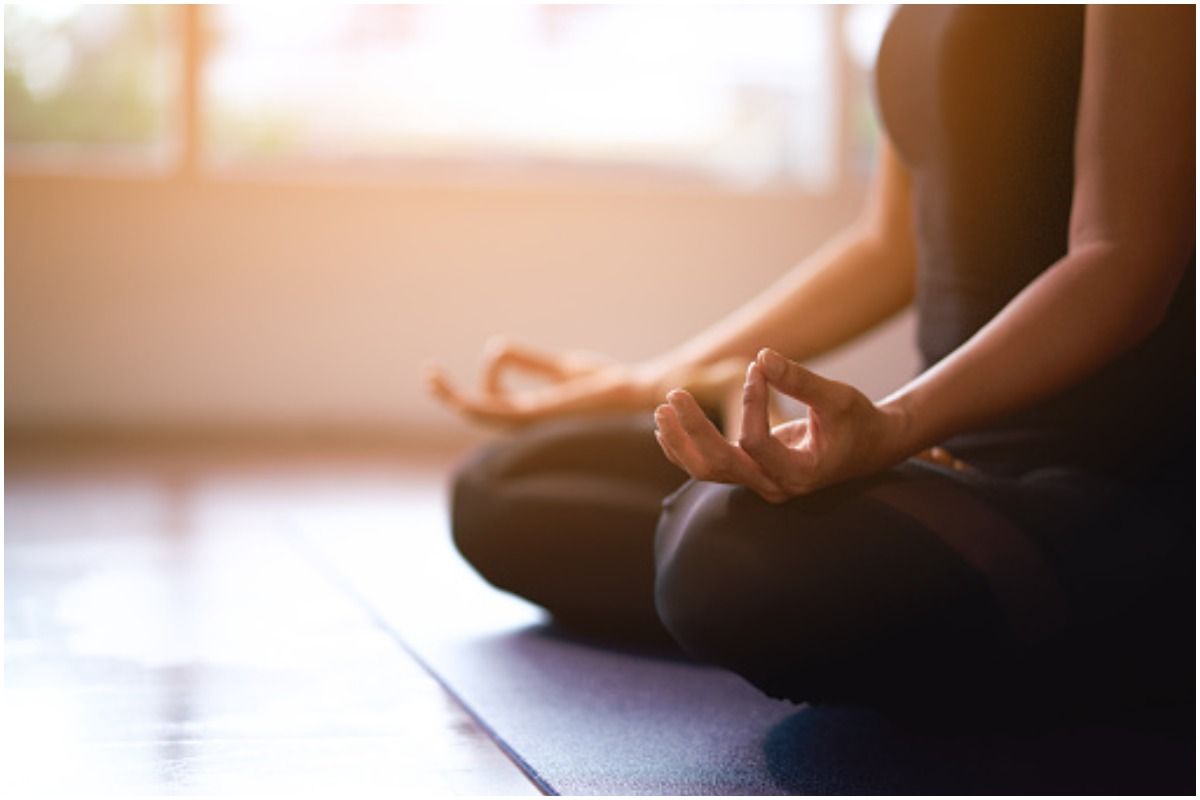
Have you felt anxious about work while you lay down on your bed to relax? Or have you ever experienced that you’re thinking of relaxing while getting ready for a busy day instead? Not being in the moment can make you feel anxious, frustrated, out of control leading to stress or even depression in some cases. In the frantic, fast-paced world we are in, many of us struggle through stress and deal with anxieties feeling overwhelmed and drained.Also Read – 5 Simple Steps to Reorient Focus When Dealing With Anxiety And Panic
Many people who have come to me for healing and spiritual counselling are going through anxiety and stress, and other spiritual challenges; for various reasons, but one thing that helps them on their journey is becoming aware! And that is the essence of “Mindfulness”. Also Read – 5 Yoga Asanas to Avoid Heart Stroke
Meditation in the Indic knowledge system is about “dhyana& “dharna” and then” samadhi”. In the process, we need to be aware first externally and then move the awareness inwards towards every thought, action, emotion, and response. There are various meditation techniques you can opt for, such as mantra, mindfulness, transcendental, etc. Also Read – Kareena Kapoor Khan Breaks Silence on Being Trolled For Naming Her Son ‘Jehangir Ali Khan’
Mindfulness meditations have become very widespread nowadays. The term “Mindfulness” is a western term used for a Buddhist technique (taken from the yogic meditative practices) of being aware in the present moment entirely and non-judgementally. The method of mindful meditation involves sitting comfortably, concentrating on your breathing pattern, and then bringing your mind’s awareness to the present without gliding into worries about the past or future in your life.
When you become completely aware of the here and now, you become reflective rather than reactive, focusing on the present moment. The practice facilitates us to alienate ourselves from our thoughts and feelings without tagging them as good or bad. Practising mindfulness meditation has not only physical, mental but also emotional benefits, relieving one from long-term anger, depression, or pent up emotions.
There are two types of interventions, mindfulness practice focuses present mental wellbeing and therapy work:
- Mindfulness-based stress reduction (MBSR) is an intervention that involves daily mindfulness exercises and meditations to practice at home. This guides people on increasing mindfulness through yoga and meditation, helping them release any stuck up emotions causing stress.
- Mindfulness-based cognitive therapy (MBCT) is an intervention that combing MBSR and cognitive behavioural therapy (CBT) to treat people with depression and anxiety.
How Does it Help in Easing Anxiety And Stress?
When you tune into your thoughts and feelings, you will reach a point of acceptance and forgiveness. In addition, once you witness the experience you have had, you “disassociate” yourself with the incident enabling you to dial down the body’s response to the stress you are experiencing.
By becoming aware of your body and thoughts, you become present in the moment, without judging yourself – the result being lowering your stress response and increasing your oxygen. This, if done regularly, changes the stress pathways in the brain according to various researches, changing brain structures associated with emotional regulations.
So, what will happen if you practice “Mindfulness” regularly in relation to your stress and anxiety levels?
- Become aware & step back; you become aware of how you are dealing in real-time, you gradually become stress-responsive rather than reactive.
- Become a human being, and we forget we are human beings, not human doings! We start experiencing our life as it is happening. This helps us live in the moment and drastically reduce anxiety or stress-based fear.
- Reducing Amygdala Responses – Amygdala is the area in the brain responsible for switching on your stress response, reducing anxiety mentally and physically.
- Focus, concentration and increased productivity is experienced.
Mindfulness Practice (3-5 mins):
- Sit comfortably. centring your mind, body and spirit
- Start by focusing on your breathing. Now notice your breath as you inhale and exhale in the natural rhythm of your breath.
- Now slowly start becoming aware of your body, just aware, no reaction.
- Notice whether you can feel the stress in your body. Physical tension, quicker heart rate, a teeny bit of sweating, butterflies in your tummy, tightness in the back or shoulders or jaw, perhaps. Look out for your stress signals.
- Tune in to your emotions. Notice how you feel. Be present to the feeling you are experiencing.
- Bring mindful attitudes to the emotion. These include curiosity, friendliness, and acceptance.
- Stay aware of your mind and body, feeling your body and environment in totality – sound, smell, touch. All senses heightened.
- Stay here for a while.
- You can practice an affirmation here as you breathe in and exhale.
- When you’re ready, bring this meditation to a close.
(Authored article By ModMonkAnshul, founder SoulSchool Business Psychologist, Spiritual Coach, Mystic)
Stay connected with us on social media platform for instant update click here to join our Twitter, & Facebook
We are now on Telegram. Click here to join our channel (@TechiUpdate) and stay updated with the latest Technology headlines.
For all the latest Lifestyle News Click Here
